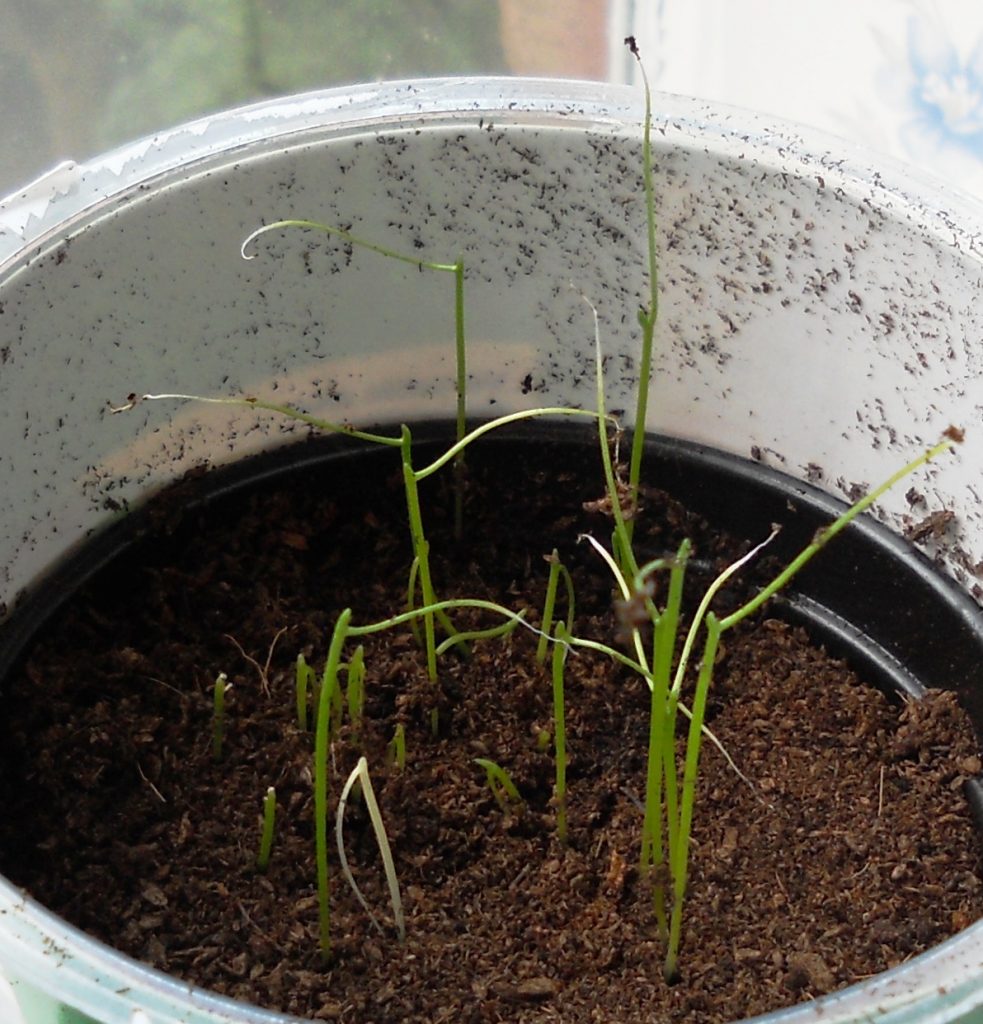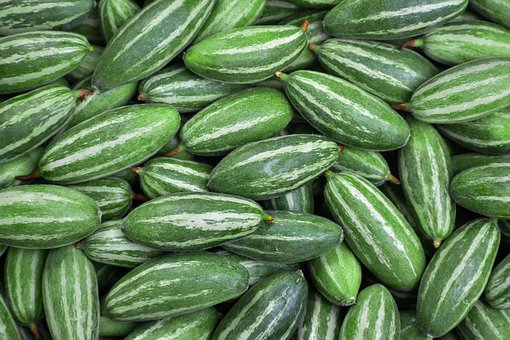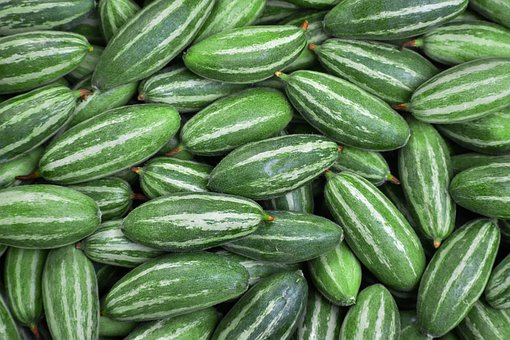The bulbous perennial hub called chives (Allium schoenoprasum) develop about 12 to 18 inches tall and yield appealing pink flower in spring. That thin, hollow, deep Green leaves upload a slight onion flavour to a number foods. Chives are hardy in US branch of agriculture hardiness zones four thru 8, however in addition they develop interior in pots, permitting entertainment of those appealing and engaging herbs
Uses of chives
Culinary Chives are grown for his or her scapes and leaves, that are used for culinary functions as a flavoring herb, and offer a incredibly milder onion-like taste than the ones of different Allium species.. The flora will also be used to garnish dishes. There is a place name Poland and Germany, In these types of places chives are served with quark. Chives are one of the fines herbes of French cuisine, the others being tarragon, chervil and parsley. Chives may be determined sparkling at maximum markets year-round, making them effortlessly available; they also can be dry-frozen with out tons impairment to the taste, giving domestic growers the possibility to keep big portions harvested from their personal gardens.
Also Read: How to Grow Chinese Cabbage from Cuttings?
Uses in plant cultivation
Farmers might plant chives among the rocks making up the borders in their flowerbeds, to preserve the vegetation loose from pests (along with Japanese beetles). The developing plant repels undesirable insect life, and the juice of the leaves may be used for the identical purpose, in addition to combating fungal infections, mildew, and scab.
Also Read: Can I Grow Snake Gourd Plant in Container?
Types of Chives
There are exceptional varieties of chives to select from, and all of it relies upon to your wishes to pick out one:
Onion Chives or Common Chives (Allium schoenoprasum):
The maximum famous and typically regarded form of chives. It normally grows as much as 10-12 inches tall. As the call suggests, chives flavor like moderate and uncooked onion. The sensitive taste makes it an brilliant addition to salads, omelets, and whatever you need them to feature in. *The plant life also are edible.
Garlic Chives (Allium tuberosum):
Also regarded as Chinese chives, it’s typically grown for culinary cause and may be as much as 12-24 inches tall, large than not un usual place chives. The leaves are utilized in cooking, typically in stir-fries, meat dishes, and salads. The flavor is sharper than chives and lots just like garlic. Its white plants also are safe to eat and appeal to bees and butterflies.
Giant Siberian Chives (Allium ledebourianum):
It’s loads of chives that’s large in length than the opposite ones and grows to round 18-30 inches in height. Flavored like an onion, they may be brought to numerous dishes or used as a border plant due to their length
Blue Chives (Allium nutans):
Also referred to as Siberian chives, this species of chives generally develop as much as 10-12 inches in pots and prefers wet soil. It has blue-inexperienced leaves, consequently the name. You can develop it in small pots–the taste is moderate garlicky
HOW TO HARVEST CHIVES ?
When to harvest:
Harvest sparkling inexperienced leaves constantly early spring to fall, however don’t begin harvest till flora are as a minimum 6 inches tall approximately five weeks after planting. Established flora a yr antique or greater can face up to everyday harvest.
Must Read: Harvesting Onions – When And How To Harvest Onions
How to harvest:
Cut leaves with lawn scissors or sharp knife. Cut the outer leaves first. Harvest from the bottom of leaves to keep away from flora with reduce tops. Leave approximately 2 inches of leaf blade above the soil so as for the leaves to regrow. Always go away a few pinnacle boom at the clumps to hold the power of the bulbs. Stop harvest three weeks earlier than the primary frost date to permit flora to flower and the clump to expand. Garlic chives may be pulled roots and al
How to grow Chives indoor?
Developing chives inside bode well with the goal that you may have them close to the kitchen. Use chives generously in dishes; chives developing inside will profit by a customary trim. Continue perusing to learn, how to develop chives inside.
Tips for Planting Chives Indoors
To plant chives indoor you have to fill a 6-inch (15 cm.) clay pot with well-draining potting medium that you have pre-moistened. Soil have to shape a ball whilst squeezed, however now no longer be soggy or dripping water. Broadcast seeds over the pre-moistened medium and cowl with a quality layer of the pre-moistened soil, approximately ¼ inch (.6 cm.) deep.
Place withinside the lighted area. Seeds can be stored wet till germination with a mist of water, vulnerable plant meals or vulnerable compost tea. Chives germinate inside weeks, regularly extra quickly. Growing chives interior gives a on hand and smooth manner to season your meals and brighten your space.
Thinks you need
- Container & Soil
Chives are pretty famous to develop because of their cap potential to thrive in surprisingly small boxes. In fact, many humans select to develop them in very small boxes on windowsills. Obviously you’ll develop much less in smaller pots, however their cap potential to be flexible makes them attractive to many gardeners. Our advice for boxes is clay pots as they assist with right drainage, however virtually any field will do if cared for correctly.
The maximum crucial aspect is to ensure there may be right drainage in order that water doesn’t take a seat down at the lowest of the pot. Small holes is commonly sufficient to permit extra water out of the pot. Too tons water sitting withinside the pot can lead to root rot, that can kill your plant.
For soil, you’ll need to apply a properly draining potting soil. Most business soils will work, in addition to the ones categorized specially for herbs. When planting interior, continually ensure get a potting soil and now no longer a lawn soil. Garden soil won’t permit for correct drainage.
When planting, you’ll need to pre-moisten the soil earlier than sowing the seeds or planting the seedlings. Plant the seeds approximately 1/4″ deep, and cowl the roots for seedlings.
If planting from seeds, count on them to germinate in round 2 weeks.
- Lighting
When developing chives interior one of the top issues is mild. Chives commonly require approximately six-eight hours of direct sunlight. If now no longer possible, supplementing with a develop mild is a choice.
Using a develop mild is flawlessly fine, and ought to be located more or less 6-12 inches farfar from the plant relying on intensity.
If you word your chives start to bend, truly rotate the pot in order that they bend farfar from the mild. They will accurate themselves as they attain the other manner to develop closer to the mild. It’s endorsed to present them a rotation each week or so as to make sure right growth.
- Water & Feeding
Chives are pretty hardy plants, in order that they don’t want to be watered constantly. Simply take a look at each day or so to peer if the soil is dry to touch, and in that case supply them a radical dose of water. You’ll need to saturate the soil, however now no longer soak it. Watch for any drainage holes to begin leaking, and that’s commonly a quite excellent signal to prevent because the soil is very well saturated.
Chives additionally revel in a chunk of humidity. Following popular humidity practices is a superb idea, and you could additionally gently mist them among watering to hold the humidity from getting too low.
For fertilizing, a low electricity fertilizer is preferred. Use a water soluble fertilizer, and dilute to 1/2 of electricity 1-2 instances in line with month at some point of the hotter season. Chives generally tend to develop slower at some point of the winter (even interior) and consequently don’t want to be fed as often.
How to Store Chives
Use chives while they’re clean or frozen (freeze the leaves in an hermetic bag). Dried chives lose their taste.
Store chives in a fab location in a resealable container.
Recommended Varieties:
Garlic chives, to feature a moderate garlic taste to any dish
Wit and Wisdom:
In the garden, plant chives subsequent to carrots and tomatoes, however keep away from planting close to beans and peas.
Chives are stated to repel aphids and Japanese beetles. Plant them close to susceptible plants.
Bunches of chives hung withinside the domestic had been used to power away sicknesses and evil. Find out extra natural folklore here.
Chives are stated to represent usefulness
Is Chives Nutritious ?
Eating chives can also additionally assist enhance someone’s sleep and bone health.
Chives are a nutrient-dense food. The statement that they’re low in calories however excessive in useful nutrients, including vitamins, minerals, and antioxidants.
That said, to get a giant quantity of those nutrients, someone could must devour a huge amount of chives. Instead, humans frequently use chives as a garnish. A not unusual place serving is ready 1 tablespoon (tbsp), or three grams.
According to the United States Department of Agriculture (USDA), 1 tbsp of chopped chives gives the subsequent nutrients:
energy: 0.nine calories
diet K: 6.38 micrograms (mcg), or 5% of the Daily Value (DV)
diet C: 1.seventy four milligrams (mg), or 2% of the DV
folate: three.15 mcg, or 1% of the DV
diet A: 6.forty three mcg, or 1% of the DV
calcium: 2.seventy six mg, or much less than 1% of the DV
potassium: 8.88 mg, or much less than 1% of the DV
Care of Chives
Chive plants profit by soggy soil yet will endure infrequent dryness. The best strategy is to check the dirt by embeddings a finger to an inch deep towards the edge of the holder. It ought to be anything but difficult to detect if the dirt is dry by testing thusly, yet there are additionally self-watering pots and gadgets that can be utilized to test soil dampness levels.
Since they are perpetual, chives will keep on creating for some seasons, years even! They will, in any case, should be isolated like clockwork. After a few seasons, the little bulbs underneath the dirt will have increased and packed together into bunches. To isolate them, tenderly uncover the bulbs, separate them, and re-plant them, moving the abundance bulbs to another holder or reaping the entire plant to eat. Prepare plants in any event once every year to keep them delivering admirably.
Conclusion
Chives are the ultimate “gateway culinary herb” for reluctant indoor growers. They are flexible and smooth to comprise into dishes and require nearly no care– making them an extraordinarily exact go back on investment.



